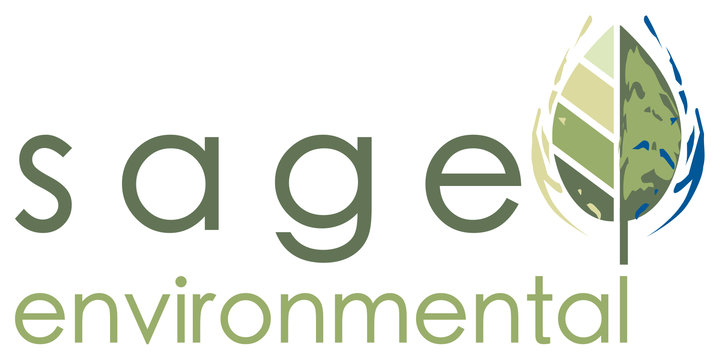Written by: Jessica Morgan P.Ag., Environmental Scientist
Before the days of natural gas, propane, and electric heat in our homes, residential buildings often relied on heating oil. Residential heating oil storage tanks are commonly located in basements, or outside as either an above ground or underground tank. Many have been abandoned or go unused which creates a hazard to the environment but also may pose a fire or explosion hazard under certain conditions.
The BC Ministry of Environment has a Fact Sheet – “Fact Sheet 32 – Residential Heating Oil Storage Tanks” – that provides great guidance for residential home owners and their obligations when it comes to these tanks.
If your property is under Federal or First Nations jurisdiction, you can refer to the Environment Canada document – “Petroleum Storage Tanks”.
Here’s a bit of a step-by-step guide to Heating Oil Tanks:
How to: Know if you have one
The age of your home isn’t as obvious of an indicator as other building factors like asbestos or copper wiring may be. Heating oil tanks were phased out when the use of alternative sources was introduced, so it depends on your municipality and when those services were introduced (ex. Some parts of Vernon, BC began installing natural gas in the mid-1980’s).
A brief inspection may identify features associated with a heating oil tank. Underground tanks usually have a vent pipe and a larger fill pipe that stick out of the ground. Vent pipes frequently run up the side of the house and fill pipes are often in the yard. Other more inconspicuous features are the feeder lines to the house which may be buried. Inside the house, if you see thin copper lines that lead into the house and appear to be cut off or disconnected, it may be an indication of a heating oil tank.
Not all house sales will indicate the presence of the tank. While sellers are required to disclose if they know of the tank, they may not know it’s there.
If you suspect a tank, an Environmental Consultant can help you identify the features, and radar scanning can help to locate the tank and its depth.

Photo 1: Fill pipe of underground heating oil tank. May or may not be this obvious!
How to: Know if you need to remove it
”If you currently own a home with a heating oil tank, you may also become liable for future cleanup costs.” – Fact Sheet 32
You should contact your local municipality to determine if bylaws exist stating that the tanks must be removed.
The presence of a tank may prevent a property transaction as they can be an issue for financing and insurance companies.
Underground and above ground tanks may be a source for impacts to the property. Proper removal of a tank and potential impacts will limit liability for all parties involved.
Tanks may contain remnants of heating oil which may leak from the tank or create a hazardous atmosphere in the tank. Leaking tanks may impact local soil or even groundwater.
Indoor heating oil tanks do not often require a consultant but one can be hired to coordinate the removal of tank contents and the tank disposal.
How to: Have it removed
Environmental Consultants can be hired to help run the show or just to help with the technical aspects of the removal. To start off, a BC One Call is free and required for safe subsurface work. Many consultants or excavation companies won’t break ground unless there’s been a BC One Call and utility locator to confirm the utility locations. The locator can also help you locate the tank if you haven’t already done so.
If the tank contains any remnants of oil it will need to be emptied and cleaned by a hazardous materials specialist (i.e. Hydrovac truck) before the oil is properly disposed of at a licensed oil recycling facility. Environmental Consultants are trained in Transportation of Dangerous Goods and will help to prepare waste manifests, required for the transport and disposal of any tank contents.
The tank will be removed often by an excavation contractor and disposed of per local bylaw and/or landfill requirements.

Photo 2: Underground Heating Oil Tank Removal. Consultants will review the condition of the tank and underlying soil.
How to: Make sure the tank hasn’t leaked
This is where you will need an Environmental Consultant. Just removing the tank won’t satisfy lenders or insurance providers that the property has not become a contaminated site.
”Although the Ministry of Environment does not specifically regulate residential heating oil storage tanks, all property owners in BC under provincial jurisdiction are legally responsible for complying with the provincial Environmental Management Act and the Contaminated Sites and Hazardous Waste Regulations.” – Fact Sheet 32
Your consultant will be present during the tank removal to inspect the tank for holes, cracks, or leaks not just on the tank but at connection points. They will inspect the soil that surrounded the tank and take samples that will go to a lab. Based on analytical results they will give recommendations for further actions, if needed. If there does appear to be contamination independent remediation can be initiated to remove the impacts and a report filed with the Ministry of Environment.
Key Information
If you suspect you have a tank to deal with, and that it may have issues, do not attempt to remove the tank without expert help. It may be dangerous to do so and a professional can ensure it is removed safely, and help to prevent potential environmental impacts that may occur during removal.
The BCFC requires a property owner to remove or treat contaminated soil located on the property. – Section 4.1.6.3(2). This is easier and often cheaper to do as one effort with a removal team in place.
If you have a well, it’s recommended to have the well water quality tested to ensure it has not been affected by the tank.
